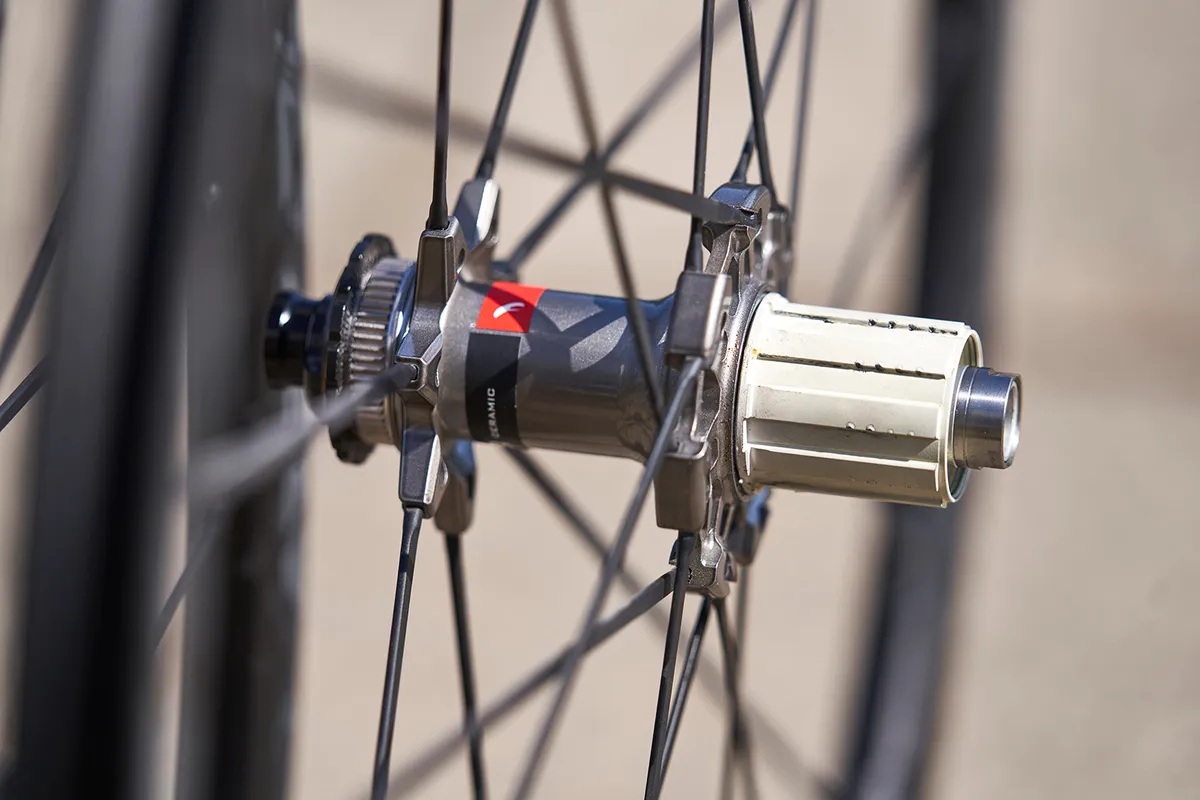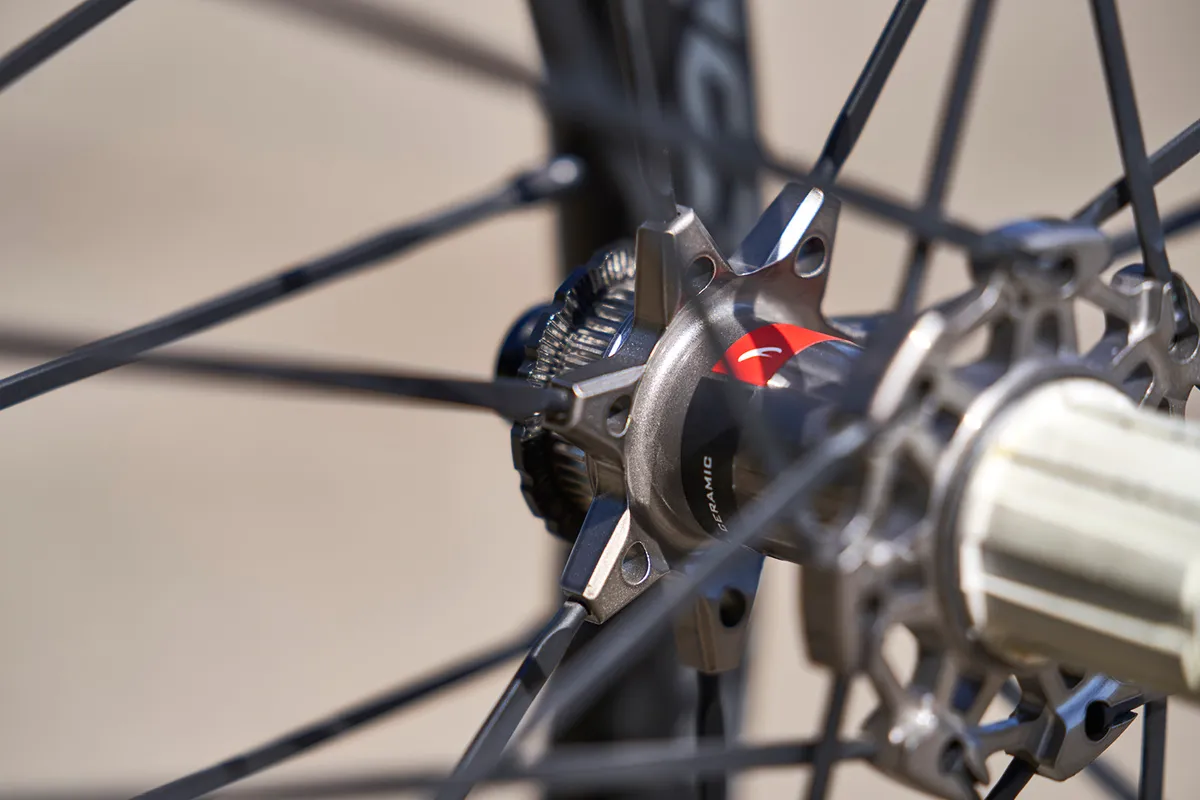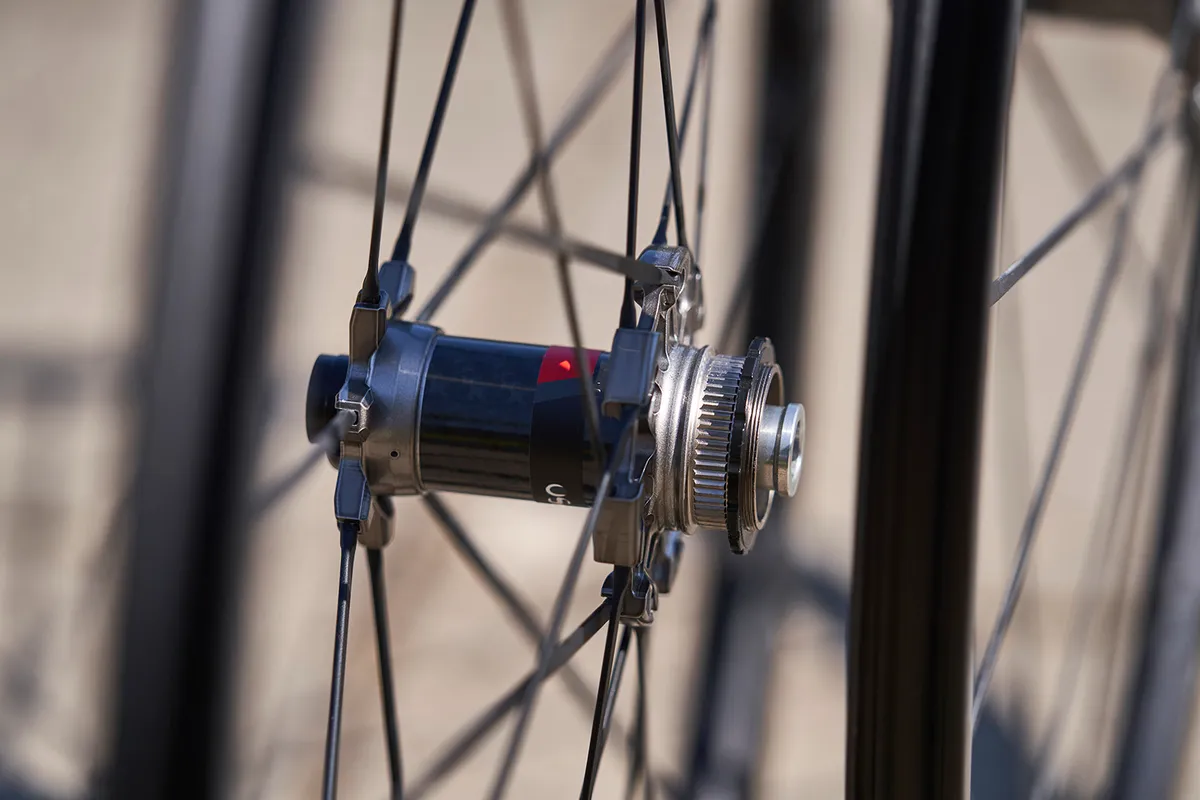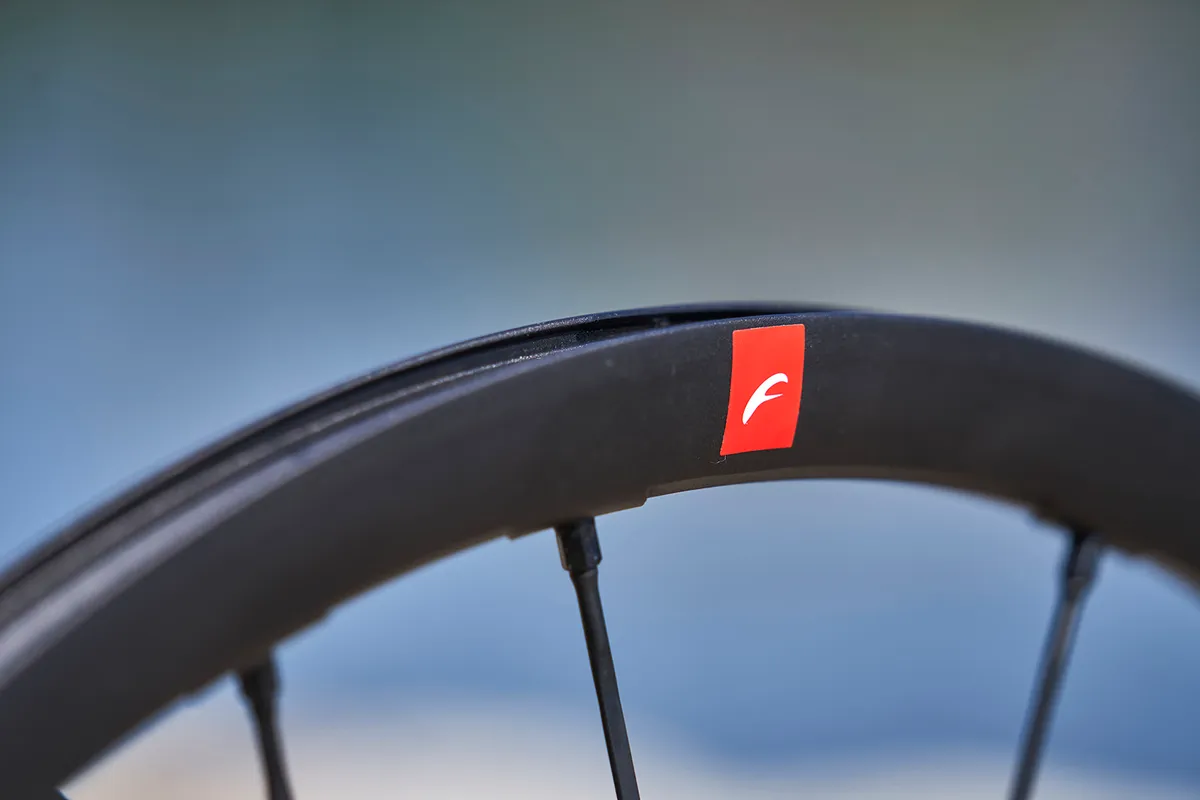Founded in 2004, Fulcrum has (intentionally or otherwise) become Campagnolo’s wheel brand for riders who wish to benefit from that company’s technologies but don’t want to have the name of the Italian company present on their bicycle alongside an American or Japanese drivetrain.
Initially, the ranges shared many similarities, but the Campagnolo wheels make use of less common spoke patterns and other unique technologies.
The Fulcrum brand, while sharing many of the same features, has less polarising aesthetics.
These Racing Zero DB (Disc Brake) wheels are the cheaper of two Racing Zero aluminium variants, built to share “the same soul as the original Racing Zero”.
In short, that means light, stiff and with great handling characteristics. At 1,610g for the pair, they aren’t in the same league as a high-end climber’s featherlight wheelset, but then we’re talking about a £1,000 alloy disc-brake wheelset with a semi-deep section rim.
Fulcrum Racing Zero DB wheels specifications and details

The rim itself has several interesting and useful features. A 6082 aluminium alloy often found in cranes and bridges is used because of its high strength and corrosion resistance.
Measuring 29.7mm at the deepest points, the Racing Zero rims are milled to remove material between the spoke holes, saving weight without compromising strength.
At a fairly deep 8.6mm, the rim channel allows plenty of room for the tyre bead to drop in, easing fitment, but the 19.1mm internal width presents a bit of a challenge – particularly when the overall bead diameter is a higher-than-average 634mm.
The bead-seat diameter measures 622.8mm, less than a millimetre larger than the ETRTO (European Tyre and Rim Technical Organisation) standard and making tyre seating both satisfying and secure.
The nipples are dropped through the valve hole and moved into position with magnets because the rim bed is solid.

With only the valve drilling interrupting an otherwise completely smooth rim bed, no rim tape is required, so tubeless setup is a fast, smooth process.
The ‘two-way fit’ nature of the wheels simply means tubed or tubeless clincher tyres can be fitted with no supplementary parts.
A small weight is added opposite the position of the valve to balance its weight and improve rolling characteristics, and the spoke holes are heavily biased to their respective sides to reduce stress on the spokes.
Those spokes are aero straight-pull proprietary offerings, 4.2mm thick and distributed unevenly .
On the front, 14 sit in a two-cross pattern disc side and 7 radially on the opposite. At the rear, 7 sit radially on the disc side, with 14 laced in a two-cross pattern on the driveside.

Fulcrum says this it to reduce torsional stress under acceleration and braking, and thus increase the durability of the wheels.
Instead of the usual cassette locknut threading into the internal surface of the hub, these hubs feature slightly wider hub bodies with external threads requiring the less common but by no means unusual lockring-style rotor retention.
Both hubs have oversize flanges to add stiffness without increasing the spoke count.
The front hub has a carbon shell to reduce weight, and both feature proprietary USB Ceramic bearings with cup and cone adjustment. In each case, a 2.5mm Allen key secures a lockring to adjust bearing tension, and removing that lockring allows axle removal.

Releasing the freehub from the axle requires 14 and 17mm cone spanners to loosen the left-hand threaded nut on the drive end of the axle.
With three pawls hooking into 30 engagement points and cartridge bearings in the freehub shell, the drive system is one of the simplest to service – provided the owner has the appropriate puller and press.
Both hubs are certainly straightforward to take apart for cleaning and re-greasing purposes.
Only one axle standard is available: 12mm diameter, 100mm width for the front and 142 rear. In other words, the standard that’s been more or less accepted for the majority of road bikes and gravel bikes.
With that in mind, Fulcrum recommends tyre widths from 23mm up to 50mm, widening the market to which these wheels are pitched.
Shimano HG/SRAM 11-speed, Campagnolo and XDR freehub bodies are available. The Racing Zero DBs are shipped with tubeless valves and an appropriate spoke magnet to fit should the rider use a computer or turbo trainer requiring one.

No facility to fit these wheels to any other axle format exists, so no spacers are included. The lack of necessity for rim tape means none of those come with the wheels either, but cassette lockrings are included.
Fulcrum includes individual identification cards with every wheel, showing it has been hand built and quality checked, and every wheel has a barcode to allow traceability for warranty and servicing purposes.
This eases enquiries, in that when “which wheels do you have?” is asked a reference number can be submitted for fast, accurate referencing of technical documents and service advice.
Fulcrum Racing Zero DB wheels performance

The Racing Zeros were tested in a variety of conditions on some of the worst-surfaced roads in the area.
Being of relatively shallow depth, they are largely unaffected by changes of wind direction, except sudden, powerful gusts. Even then, they aren’t twitchy. In fact, the ride offers absolutely no surprises. Turns are predictable; the bike goes where it’s pointed.
Out-of-the-saddle efforts mean the bike accelerates. The only unexpected thing to note is that the wheels are laterally stiffer than might be expected from the first few kilometres.
They feel comfortable and compliant, less harsh than a wheel with this width profile would have been a few short years ago, but that belies a stiffness that shows itself readily when the bike starts getting thrown around.
Most wheels these days are stiff enough to be responsive under power, but few do it while being this agreeable over rougher surfaces.
You barely notice the wheels because they just do what we hope wheels should; roll subtly along underneath us, causing absolutely no trouble.
With these wheels, Fulcrum has created a problem. Its “aim to save every possible gram of weight and to choose the most advanced technological solutions” means this wheelset could have been made just as good for noticeably less money.
It’s unclear whether the 109kg rider limit takes bikepacking equipment into account – the wording suggests not, but any other static weight (assorted bags, sleeping solutions and the like) on the wheels seems not to have been considered.
Fulcrum Racing Zero DB wheels bottom line

There’s no doubt the Racing Zero DBs are a great wheelset, but at this price it’s difficult for a shallow-section wheel to stand out.
These aren’t the lightest wheels in class – the HED Ardennes RA Pros come in some 50 grams lighter. They don’t have aero credentials to rival the Zipp 303S either.
While serviceability rivals the VeloElite CarbonWide 350-50s, those don’t use proprietary bearings or spokes, making sourcing replacement parts a greater undertaking.
Then the main rub for many; the Bontrager Aeolus Elite 50 has a deep-section carbon rim and costs a similar amount at £849.
All that aside, there is a lot to like about the Racing Zero DBs. They’re easy to set up, they’re available with freehubs compatible with any groupset, and they are serviceable – if you’re willing to look a little harder for the parts.
Not every bike suits a deep-section rim. It’s not difficult to view these wheels as a long-term investment, and a worthy one at that.
How we tested
We’ve assessed seven pairs of road bike wheels around the £1,000 price point over months of gruelling testing.
From varied endurance rides to high-intensity short but hilly blasts, we’ve put these wheelsets through their paces.
Each set of wheels had a list of parameters measured – including trueness, roundness and spoke-tension variance – out of the box, with measurements taken again at 500km.
Wheels on test
- VeloElite Carbon Wide 350-50
- Fulcrum Racing Zero DB
- HED Ardennes RA Pro
- Bontrager Aeolus Elite 50
- Scribe Aero Wide 42 D+
- Vision SC55 DB TLR
- Zipp 303S
Product
| Brand | Fulcrum |
| Price | A$1596.00, €1018.00, £856.00, $1268.00 |
| Weight | 1610g |
Features
| Rim material | aluminium |
| Tubeless compatibility | tubeless_ready |
| Wheel size | 29in_700c |
| Brake type simple | disc |
| Spokes | Proprietary, straight pull |
| Freehub | Shimano/SRAM 11speed, SRAM XDR, Campag |
| Rim depth | 29.7mm |
| Rim internal width | 19.1mm |
| Spoke count | 21 |
| Spoke count | 21 |
